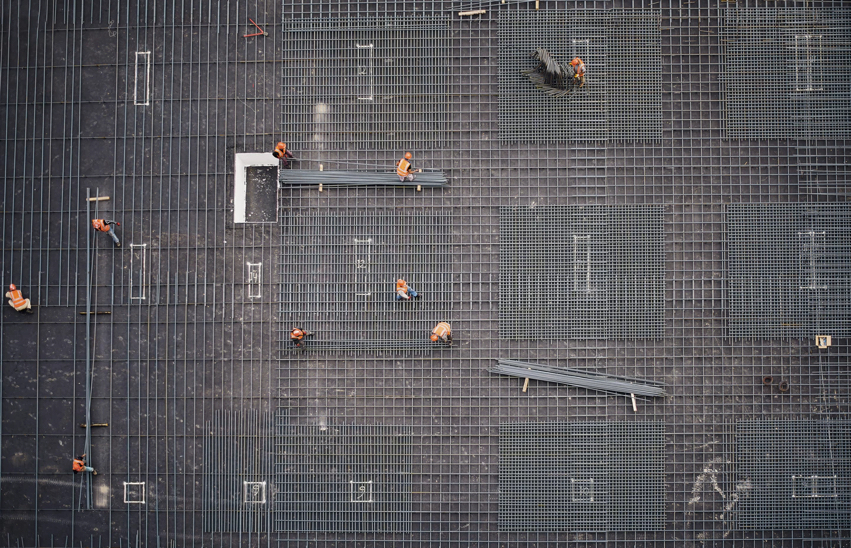
Technology has rapidly changed during our lifetimes. A calculator, novel, CD player, and computer now fit neatly within our pockets in the form of a smartphone. Technology revolutionized the landscape for factories, travel agencies, banks, and taxis. What impact will technology have on construction? Join us, Wednesday, June 2nd at 10 am CT, with our expert panel from Arrowhead Coaching, Joeris, and Aedo.AI. We will discuss how construction technologies are reshaping the job market and what training needs must stay competitive, efficient, and productive.
Technology in the 21st Century
Let’s time travel back to the year 2000. Most people are done partying like it’s 1999 and glad to see that Y2K never materialized. You wake up and grab your morning newspaper off your lawn. Today you are traveling across the state to visit an old family friend. You pack all things you’ll need – a Walkman, an address book, and a Garmin GPS. You remind your daughter to bring her GameBoy; it’s going to be a long trip.
Today, all those are replaced by an iPhone. Not only has technology replaced things we use daily, but it has also changed how jobs are performed. Hotels are booked on apps, plane tickets booked online, rides hailed through Uber. We have seen automation drastically change how cars are manufactured, planes are built, and parts are sourced. Like horse-drawn buggies before the automobile, our needs will vary based on what technology can do for us.

How Construction is Unique
Construction has long resisted the upheaval other industries have experienced with technology. Many point to the blue-collar culture of the jobsite. In reality, construction remains consistent while other sectors are upended because it is truly unique. Three key traits of construction answer why it has not been disrupted yet.
First, the industry is highly fragmented. In 2019, $1.3 trillion was spent on construction in the US alone. Even the largest construction company did not exceed 1% of that value. Contrast that with Windows in over 70% of all operating systems. The construction process also involves multiple stakeholders: general contractors, specialty contractors, architects, engineers, developers, suppliers, and more. It isn’t easy to standardize one type of technology when everyone has their preferred means and methods.
Second, construction projects are unique themselves. Like a bespoke suit, each building is custom designed, engineered, and built to its unique environment. Each site is different in terms of space, environmental constraints, and cultural needs. These variations make it challenging to create an automated building solution because the variables range so drastically. Historically, robots are good inside controlled environments and bad outside – like chaotic, messy jobsites.
Third, the construction bid process makes risk problematic to share. With car manufacturing, the brand will assemble OEM parts but will ultimately be responsible for the vehicle’s quality and safety. With construction, the expertise required is varied and nuanced. Structural engineers, concrete contractors, plumbers, landscape architects, etc., all share a unified project goal but rely on each other’s capabilities to deliver a project successfully. Parceling out portions of a project allocates specific risks to specific parties. Concrete mix quality? Concrete and aggregate supplier. Energy code compliance? Architect. What these stakeholders provide is the work and supplies alongside the assurance they will get it right.

Times are changing. More and more new use cases for technology have crept into the jobsite. With condensed project schedules and worker shortages, builders are looking for new solutions to stay competitive and productive.
New technology trends in construction can be seen in:
- AI to aid in predictive design assistance and project management
- IoT to connect tools to digital workspaces
- Robotics to perform monotonous and dangerous tasks safely
- 3D printing to fabricate components directly onsite for immediate use
- AR to marry what we see in the physical world to what we expect in our BIM models
Players in the industry can no longer sit on their laurels and ignore these technological transformations. The workforce must be trained and educated on how to work alongside these technologies. Learn more about how these technologies are reshaping the construction job market.
From Our Experts:
The rise in automation on the job site offers great potential, from its ability to build structures in much less time to the way it can relieve physical strain on the bodies of those working manual jobs their whole lives. However, many fear that with rapid adoption of artificial intelligence and automation, those whose jobs can be filled by machines will be left with nothing and no capability to retrain. In this panel, we will dive into how technologies such as 3D printing, virtual reality, artificial intelligence and machine learning are reshaping the construction job market and the employee training and education needs.
Our Experts
- Andy Gajbhiye, Director of Technology, Joeris
- Sean Reid, President, Arrowhead Coaching
- Noah St. Aubin, Innovation Technology Field Learning, AedoAI Inc
Join Us Wednesday, June 2nd 10 am CT To Learn About Technology’s Impact on Your Workforce

Discussion
Be the first to leave a comment.
You must be a member of the BuiltWorlds community to join the discussion.